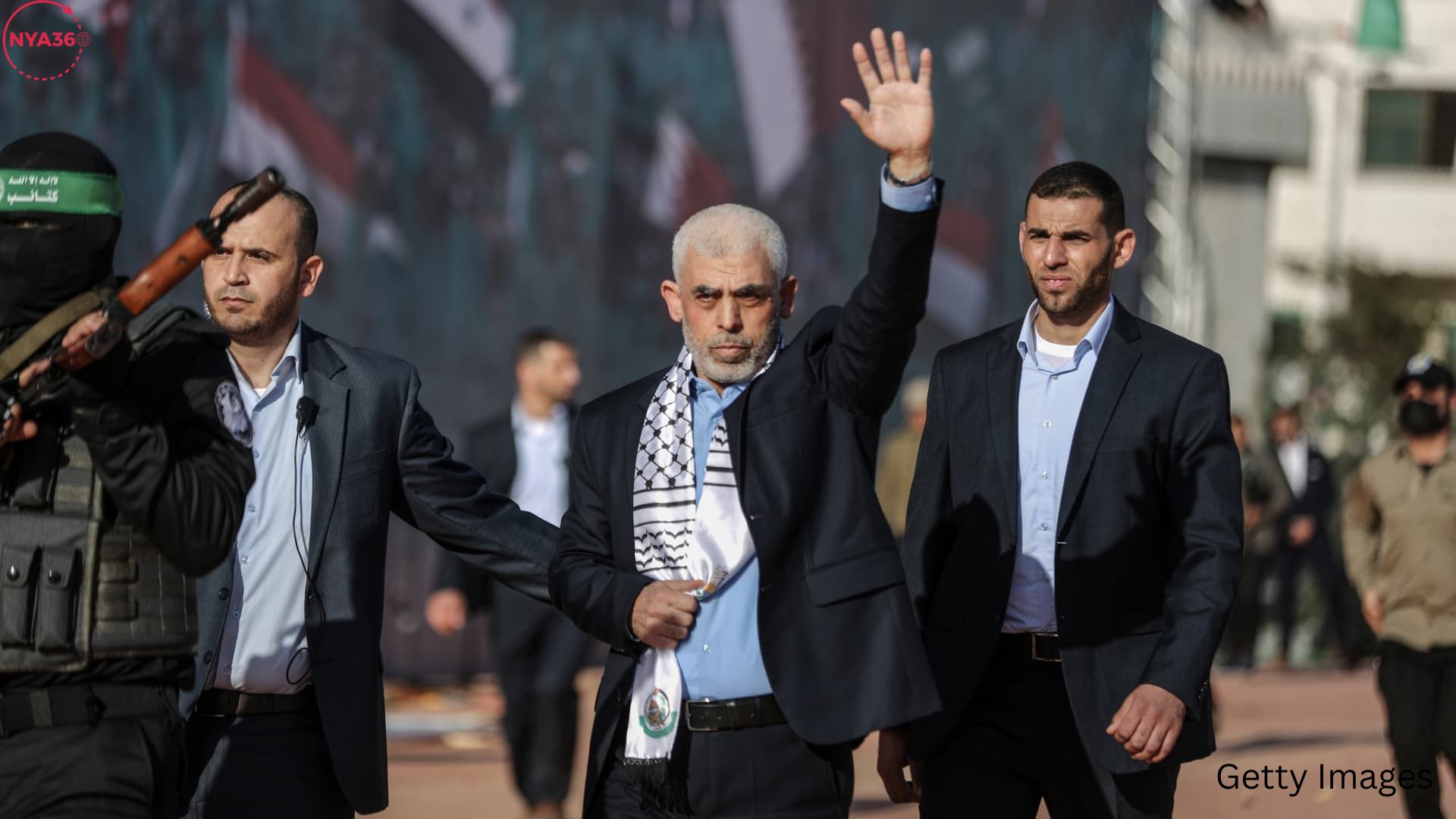Yahya Sinwar, a leading figure of Hamas, was reportedly discovered deceased on the battlefield, accompanied by two bodyguards. Sinwar’s corpse, clad in a battle vest and wielding an AK-47, was found above ground, starkly contrasting the depiction of terrorist leaders concealing themselves in tunnels or among civilians to evade capture. His participation on the frontline, engaging with the Israeli Defense Forces (IDF), represents a notable development that contests prevailing assumptions regarding senior Hamas officials’ leadership style and personal engagement in direct battle.
Who is Yahya Sinwar?
Yahya Sinwar is not merely a leader within Hamas but one of its most formidable and influential personalities. Sinwar, born in Khan Younis in the southern Gaza Strip in 1962, has been deeply involved in the Palestinian resistance movement. He co-established Hamas’ armed faction, the Izz ad-Din al-Qassam Brigades, in the late 1980s and was instrumental in orchestrating assaults on Israeli military and civilian objectives. Throughout the years, Sinwar cultivated a reputation for being ruthless and inflexible in his philosophy, facilitating his swift ascent among the ranks of Hamas.
In 1988, Sinwar was apprehended by Israel for his participation in a series of lethal assaults and subsequently condemned to life imprisonment. In 2011, after more than twenty years of incarceration, he was released as part of a prisoner exchange in which over 1,000 Palestinian detainees were exchanged for Israeli soldier Gilad Shalit. Upon his return to Gaza, Sinwar swiftly reestablished his authority within Hamas, seizing control of the Gaza Strip in 2017.
Sinwar’s ascension to prominence epitomized a transformation within Hamas, indicating a more stringent position against Israel. He was perceived as embodying the military faction rather than the political leadership, advocating for the persistence of armed conflict over diplomatic discussions. His leadership of Hamas in Gaza has been characterized by recurrent confrontations with Israel, including significant escalations, particularly during the conflicts of 2014 and the recent outbreak of hostilities in 2023.

The Circumstances Surrounding His Demise
The finding of Yahya Sinwar’s body in combat attire constitutes a significant revelation that prompts numerous critical inquiries regarding Hamas leadership, its military tactics, and the overarching context of the persistent Israel-Gaza confrontation. Reports indicated that Sinwar was not concealing himself in a tunnel nor attempting to assimilate among people, contrary to common assertions regarding Hamas commanders. Instead, he was slain amid combat, with his warriors, who were ready for the confrontation.
This starkly contrasts with the prevalent notion that numerous Hamas officials eschew frontline engagement, opting instead to orchestrate operations from concealed bunkers or tunnels beneath Gaza’s densely populated regions. The subterranean complexes, also known as the “Gaza Metro,” have been utilized by Hamas to protect its leadership from Israeli airstrikes and to transport personnel and supplies covertly. The assertion that Sinwar, possibly Hamas’ most significant leader in Gaza, was engaging in combat alongside his troops contradicts the prevailing view that militant leaders eschew direct engagement with Israel’s forces.
Sinwar’s demise signifies a pivotal juncture in the protracted battle between Israel and Hamas, particularly as it occurs after a series of lethal confrontations between the IDF and Hamas fighters. The discovery of his body on the frontlines indicates a heightened level of personal engagement by Hamas’ leadership in combat and prompts significant inquiries regarding the group’s strategic decisions.

Importance of Sinwar’s Role on the Frontline
Sinwar’s presence on the battlefield is likely to be perceived differently by the various parties engaged in the combat. For Hamas and its adherents, Sinwar’s readiness to perish alongside his militants may be perceived as a testament to his dedication to the cause, bolstering the belief that Hamas’ leadership is intimately connected to the challenges faced by its soldiers. This reinforces the narrative of resistance that Hamas has developed over decades: that its leaders are not only political personalities, but combatants prepared to sacrifice their lives for the liberation of Palestine.
This differs from the depiction of numerous other militant commanders in the region, who are frequently represented as remaining apart from the conflict while dispatching others to engage in combat. Sinwar’s demise in this context may solidify his status as a martyr within Palestinian culture, so entrenching his legacy as a leader unafraid of confrontation. This story may function as a rallying point for Hamas, galvanizing ongoing resistance to Israeli military actions.
Nonetheless, for Israel and its friends, Sinwar’s demise is expected to be regarded as a substantial triumph. As a top leader of Hamas, Sinwar was pivotal in the group’s military activities, and his removal significantly undermined Hamas’ leadership structure. Their demise, alongside the persistent Israeli offensive on Hamas’ infrastructure in Gaza, may diminish the organization’s capacity to orchestrate future assaults, at least temporarily. Israel has always asserted that Hamas officials utilize citizens as human shields, establishing their command centers in residential zones and functioning from densely populated metropolitan regions to dissuade Israeli bombings. Sinwar’s presence on the frontlines contradicts certain assertions and may indicate a modification in Hamas’ plan or a reaction to the considerable pressure the organization has encountered in recent weeks.

.
Wider Consequences of the Israel-Hamas Conflict
Sinwar’s demise is expected to have significant ramifications for both Hamas and the Israel-Palestine conflict. His leadership was pivotal in influencing Hamas’ policy in recent years, especially on its stance towards Israel. Under his leadership, Hamas has participated in multiple escalations with Israel, notably the 11-day confrontation in May 2021 and the ongoing hostilities that commenced in October 2023 following a significant surprise assault by Hamas on southern Israel.
The demise of Sinwar may engender a power vacuum within Hamas, resulting in internal conflicts around leadership succession. Sinwar’s military history and robust connections to the Qassam Brigades suggest that his absence could undermine the unity between Hamas’ political and military factions, possibly resulting in divisions within the organization. This may either disrupt the group, diminishing its capacity for coordinated attacks, or it could result in a more extremist element seizing control, thereby exacerbating the war with Israel.
The removal of Sinwar represents a substantial accomplishment for Israel in its overarching effort to diminish Hamas’ military capabilities. Nevertheless, it is improbable that this will result in a rapid cessation of hostilities. Hamas is a well-established organization with an extensive network of operatives and followers, and its philosophy of resistance against Israel continues to be a significant motivator for numerous Palestinians. Although Sinwar’s demise may momentarily diminish Hamas, it is improbable to yield a sustainable resolution to the conflict.
Final Assessment
The demise of Yahya Sinwar on the battlefield marks a pivotal event in the continuing combat between Israel and Hamas. His appearance on the frontline, equipped and in combat attire, contests prevailing perceptions of Hamas leadership and prompts significant inquiries about the organization’s future strategy. For Hamas, Sinwar’s demise may be perceived as a symbol of sacrifice and defiance, whilst for Israel, it signifies a pivotal triumph in its endeavors to undermine the organization’s leadership.
Although Sinwar’s removal may temporarily diminish Hamas, it is improbable to address the overarching issue, which is entrenched in decades of political, geographical, and ideological discord. As both parties contend with the repercussions of this battle, the region’s future remains ambiguous, with possibilities for additional escalation or, potentially, revitalized diplomatic and settlement initiatives.
Follow us on social media: Instagram, Threads & Twitter X @nya360_ YouTube & Facebook @nya360.





